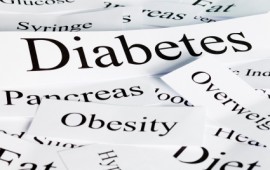The Glycemic Index Diet
Author: Shannon Miller Lifestyle

The Glycemic Index Diet is a diet typically prescribed to diabetics. It is based on the idea of how quickly a carbohydrate will be metabolized into sugar and impact blood glucose (blood sugar) levels.
What is the Glycemic Index?
The Glycemic Index is a numerical scale that is used to indicate how fast and how high a particular food can raise our blood glucose levels. A food with a low Glycemic Index will prompt a low to moderate rise in blood glucose level, while a high Glycemic Index food will illicit a high, sharp spike in blood glucose levels, often raising them above the optimal level.
What is the scale and how is it determined?
Glycemic Index values are determined experimentally by feeding human test subjects a fixed portion of the food, after an overnight fast, and subsequently extracting and measuring samples of their blood at specific intervals of time.
The Glycemic Index scale is:
- High GI: 70 and above
- Moderate GI: 56-69
- Low GI: 55 and below
Carbohydrates Raise Blood Glucose Levels
Foods that contain carbohydrates are what the Glycemic Index Diet takes into consideration. In general, proteins and fats are the only foods that do not fall into this category. It was once believe that simple sugars were digested by the body the quickly and that more complex carbohydrates were slower. However, this is not necessarily true as potatoes and white bread are often the highest GI foods. How a food is prepared should also be taken into consideration for GI. For example, baked potatoes have a significantly higher GI than boiled potatoes do.
Below are examples of what foods fall into which categories:
High GI
- White Bread
- White Rice
- Potatoes (Baked/Mashed)
- Pretzels
- Bagels
- Corn Flaxes
- Exruded Breakfast Cereals
- Parsnips
- Melons
- Pumpkin
- Pineapple
- Glucose
- Maltose
- Matodextrins
Moderate GI
- Not intact whole wheat or enriched wheat
- Pita bread
- Pumpernickel Bread
- Basmati Rice
- Boiled Potato
- Grape Juice
- Raisins
- Prunes
- Cranberry Juice
- Regular Ice Cream
- Bananas
- Sucrose
Low GI
- Beans
- Small Seeds
- Most Whole Intact Grains
- Most Vegetables
- Most Sweet Fruits
- Tagatose
- Fructose
How does the Glycemic Index Correlate with the Glycemic Load?
The glycemic index compares the potential of foods containing the same amount of carbohydrate to raise blood glucose. However, the amount of carbohydrate consumed also affects blood glucose levels and insulin responses. The glycemic load of a food is calculated by multiplying the glycemic index by the amount of carbohydrate in grams provided by a food and dividing the total by 100. Dietary glycemic load is the sum of the glycemic loads for all foods consumed in the diet. The concept of glycemic load was developed by scientists to simultaneously describe the quality (glycemic index) and quantity of carbohydrate in a meal or diet.
Is the Glycemic Index Diet a better tool than carbohydrate counting?
There is no one diet that is perfect for anyone, particularly someone with diabetes. If you are a diabetic, keeping in mind the glycemic index can help you to regulate your blood glucose a little more easily and help avoid the harsh spikes in blood sugar that can become common when you aren’t watching your diet as carefully as you should be. When you focus on choosing low Glycemic Index carbohydrates along with lean protein and healthy fats, you will naturally crowd out many of the less nutritious, high Glycemic Index foods and possibly lose weight too.
Disclaimer: Please consult your primary care physician before making changes to diet.
Source: The American Diabetes Association(http://www.diabetes.org/food-and-fitness/food/planning-meals/the-glycemic-index-of-foods.html)
